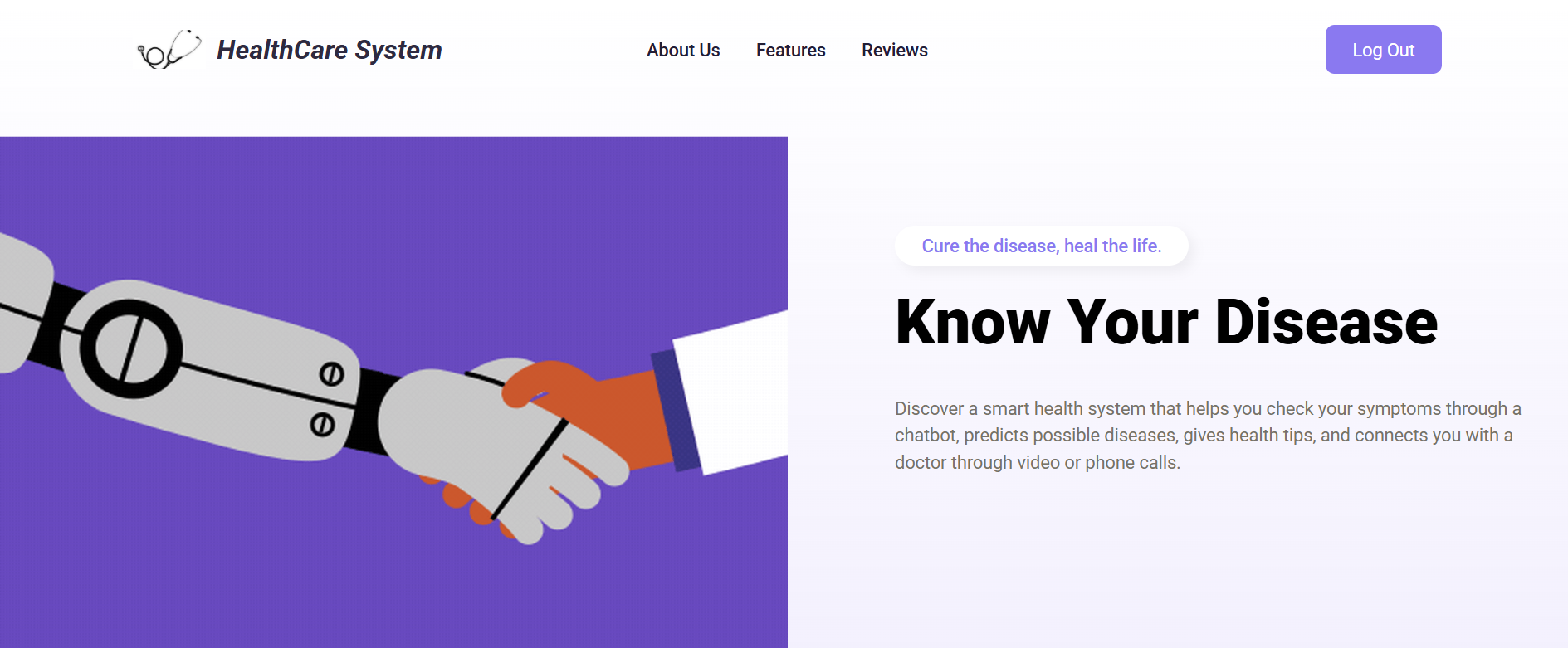Project Snapshots
Fig: Login Page
.png)
Above figure is the login page though which doctor and patient logs into the application.
Fig: Opening page

This is the user interface displayed to the patient after logging in.
Fig: Features
.png)
Patients can access the three features mentioned above.
Fig: Symptom Analysis
.png)
Patients can select symptoms or type them in if they prefer.
The system analyzes the symptoms and provides a prediction of disease.
Fig: Diabetes Prediction
.png)
Upon completing the form above in the UI, the system predicts whether the patient has diabetes.
Fig: Doctor Chat UI
.png)
Patients can chat with doctors using the above UI after selecting the doctor’s specialization and name.
Fig: Patient Notification
.png)
Patients receive notifications indicating whether their appointments have been approved, rejected, or are pending.
Fig: Patient Prescription
.png)
Patients can view prescriptions from doctors and remove them as they choose.
Fig: Doctor Dashboard Appointment Lists
.png)
This is the doctor’s UI, which displays the appointment list along with options to add prescriptions,
chat with patients, or remove appointments from the list.
Fig: Doctor Chat UI
.png)
Doctor chat UI for communicating with patients.
Fig: Doctor Prescription
.png)
Doctors can create prescriptions for patients using the notes recorded during their appointment bookings.
Project Overview
This project is a healthcare system designed to help patients and doctors interact more efficiently. It includes features like real-time chat using sockets for easy communication between doctors and patients.
Patients can enter or select symptoms, and the system analyzes these using an SVM machine learning model to predict possible diseases.
The system also offers a diabetes prediction tool based on patient input. Both doctors and patients have dedicated dashboards — doctors can manage appointments, add prescriptions, and communicate with patients, while patients can view their prescriptions, appointment status, and notifications.
Overall, this project aims to simplify healthcare interactions, improve disease prediction, and enhance communication between patients and healthcare providers.
.png)

.png)
.png)
.png)
.png)
.png)
.png)
.png)
.png)
.png)